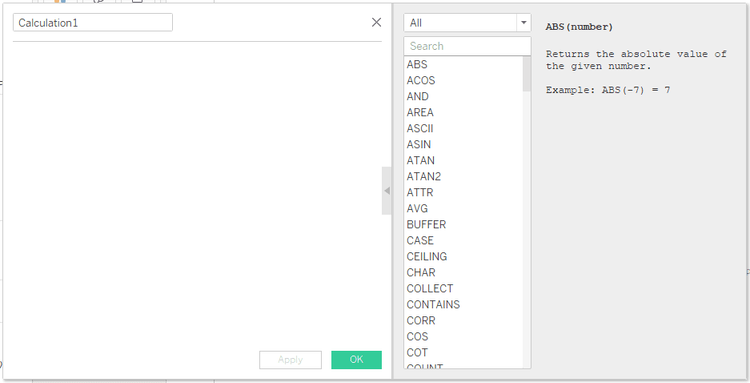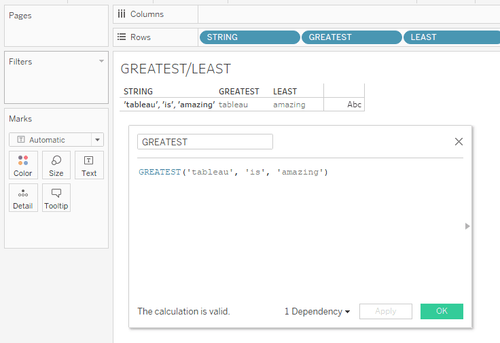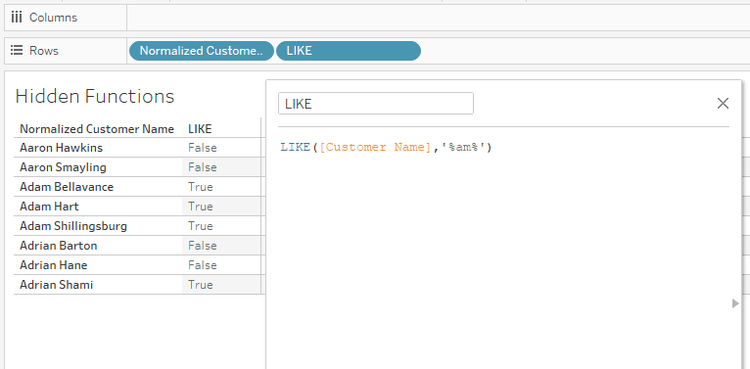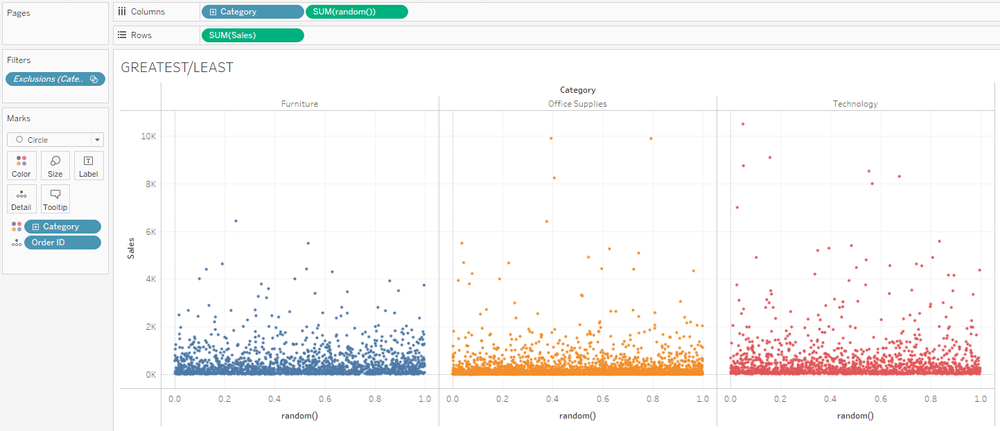
The 'secret' menu in Tableau
Did you know that Tableau has 168 functions and operators in their function menu? The function menu appears when you click on the little grey arrow in your calculated field. You can then scroll through all functions or find them sorted by different categories such as String, Spatial, Date, or Table Calculations.

The Hidden Functions
But did you know that there is also a whole 'secret menu' with hidden functions? Let's uncover what hidden functions are available in Tableau. But before, I want to give a shoutout to the one and only Flerlage twins for demoing some of these hidden functions at Tableau Conference 2025 in their session "How to do cool stuff in Tableau" (you can find the full recording here) and on this website that summarizes a lot of them.
Color Legend: Hidden function Normal Function
1. CURRENT_TIME()
Returns the current time without the current date, though the date still shows 12/30/1899 by default. You can then use LEFT() or RIGHT() or REGEXP_EXTRACT() to parse out the time only or change the custom formatting of the datetime field to only display 'HH:MM:SS AMPM". This would be useful to show the current time on a dashboard; however, you can achieve the same result with NOW().
2. GREATEST() AND LEAST()
Returns the greatest or smallest value from a series of values. For example, GREATEST(5,7,200) would return 200 whereas LEAST(5,7,200) would return 5. So why would we use this over MAX() and MIN()? These two functions also work with string data. However, when you use MAX() and MIN() on String data, it will return you the largest string (most characters) and shortest string (fewest characters). But GREATEST() will return the string that comes latest in the alphabet and LEAST() the string that comes earliest in the alphabet. Also, you can evaluate multiple inputs, e.g. multiple columns at once and not just one.

3. ICONTAINS
Acts just like the CONTAINS() function, but is case-sensitive.
4. ISNOTDISTINCT
Evaluates whether two values are distinct or not. Returns TRUE if the values are not distinct (do not match) and FALSE if the values are distinct (they do match). You can achieve a similar result with REGEXP_MATCH() if you are familiar with the syntax.

5. LIKE (and NOTLIKE)
For all SQL-fans, this function will be a life-savor. You can use LIKE to evaluate whether a string matches a specified pattern, e.g. LIKE([Customer Name], '%am%') returns any customer names that contain 'am' in their names. If you are familiar with REGEXPMATCH(), you may be able to get the same result.

6. RANDOM()
Generates a number between 0 and 1 in a random manner. It is often used in Jitter plots by dragging RANDOM() onto the columns or rows shelf.

Watch out!
There are many more functions such as LAG or LEAD, but be careful with them as they may crash your worksheet or slow down performance significantly! All of the mentioned hidden functions are not officially supported by Tableau and some hidden functions only work with Extracts!
Connect with me
If you liked this content, connect with me on LinkedIn and let me know what other content you would like to see.